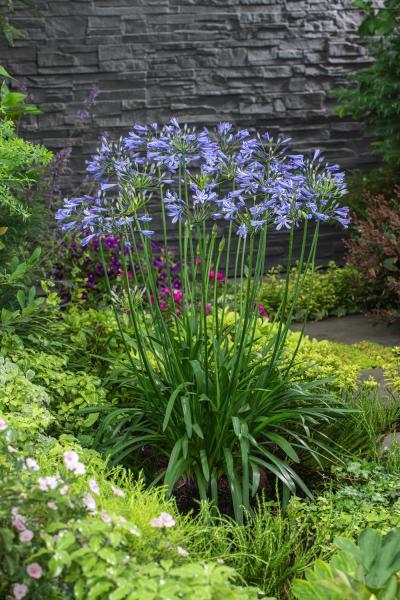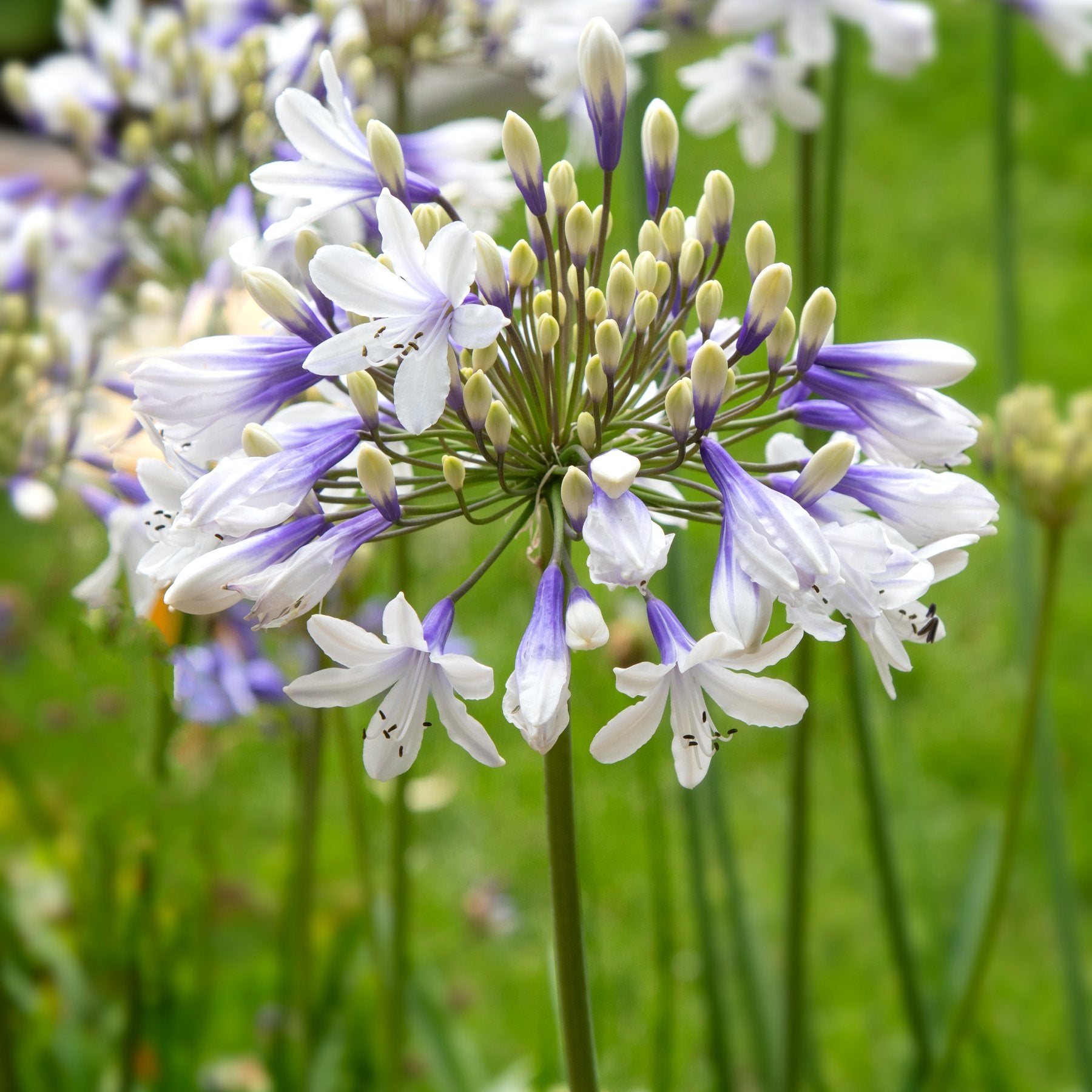Sensational Agapanthus: Enhancing Your Garden's Charm
Sensational Agapanthus: Enhancing Your Garden's Charm
Blog Article
Unleashing the Secret to Effective Agapanthus Growing: Advice for a Flourishing Yard
In the realm of horticulture, cultivating agapanthus effectively calls for a calculated method that incorporates various elements of plant care. By comprehending the subtleties of agapanthus farming, one can create an environment where these plants flourish and flower perfectly.
Planting Agapanthus: Best Practices
When planting Agapanthus, appropriate dirt prep work is crucial for guaranteeing successful growth and advancement of these attractive blossoms. Agapanthus, commonly referred to as Lily of the Nile or African lily, flourishes in well-draining soil with a slightly acidic to neutral pH level - Agapanthus. Before planting, it is vital to modify hefty clay dirts with natural issue such as garden compost or peat moss to boost water drainage and give essential nutrients for the plants
To grow Agapanthus, pick an area that obtains complete sunshine to partial color, as this will promote healthy growth and plentiful flowering. Dig an opening two times the size of the plant's root ball and place the Agapanthus at the same depth it was previously expanding. Delicately backfill the opening with dirt, pushing down securely to remove any air pockets around the roots.
Water the freshly grown Agapanthus extensively and proceed to keep the dirt uniformly wet, specifically during the plant's active growing period. Agapanthus. Using a balanced fertilizer once a month can further support the plant's growth and blooming. By adhering to these finest methods for growing Agapanthus, you can produce a spectacular display of these fascinating blossoms in your garden
Perfect Dirt Conditions for Agapanthus
For optimal development and flowering success of Agapanthus plants, guaranteeing the dirt problems are optimal is essential. Agapanthus thrives in well-draining dirt with a slightly acidic to neutral pH level varying from 6.0 to 7.0. This sort of dirt permits sufficient water drain, stopping waterlogging which can lead to root rot. To boost soil water drainage, think about adding natural matter such as compost or peat moss when preparing the growing site. In addition, Agapanthus prefers soil that is rich in nutrients, so including a well balanced fertilizer during the expanding season can advertise healthy development and dynamic blooms.

Watering and Feeding Tips
To make certain healthy growth and vibrant blooms, proper watering and fertilizing strategies are vital for successful Agapanthus growing. Agapanthus plants gain from regular watering, especially during the growing season. It is recommended to water deeply once a week, ensuring the soil is moist but not waterlogged. Throughout heat or in pots, even more regular watering might be essential to protect against the dirt from drying totally.
When it comes to feeding Agapanthus, a balanced plant food with equal components nitrogen, phosphorus, and potassium can be applied in the spring to promote healthy and balanced development and flowering. Slow-release plant foods are excellent for supplying nutrients slowly over an extended duration. Stay clear of over-fertilizing, as this can bring about extreme vegetation growth at the expenditure of blossoms.
Furthermore, incorporating natural issue like compost right into the soil can enhance nutrient degrees and improve dirt structure, aiding in the total wellness of the Agapanthus plants. By complying with these watering and fertilizing pointers, gardeners can ensure their Agapanthus plants thrive and generate spectacular display screens of flowers.
Pruning and Deadheading Methods
Proper trimming and deadheading techniques play a critical function in maintaining the health and wellness and visual appeals of Agapanthus plants, enhancing the necessary practices of watering and feeding for successful growing. Trimming Agapanthus includes getting rid of spent blossom heads, yellowing or dead leaves, and total shaping of the plant to promote far better growth. Deadheading, the process of getting rid of faded blossoms, not only improves look at here the plant's look however likewise urges additional growing.
When deadheading Agapanthus, it is recommended to trim off the view it now flower stem at the base utilizing sharp, tidy shears. This process reroutes the plant's power from seed production back into origin and foliage growth, advertising a much healthier and more robust plant. Normal deadheading can extend the flowering duration of Agapanthus and protect against self-seeding, which can result in congestion.
In regards to pruning, Agapanthus usually gain from a light trim after blooming to tidy up the plant and encourage fresh growth. Cutting down the invested blossom stems and removing any type of dead or broken vegetation aids keep the plant's vitality and general appearance. Nevertheless, it is important to stay clear of reducing right into the crown of the plant, as this can weaken its health and wellness.

Protecting Agapanthus From Vermins and Diseases
Implementing effective pest and disease management techniques is important to securing the health and wellness and vitality of Agapanthus plants in growing. Agapanthus are typically hardy plants, but they can still succumb different parasites and illness otherwise correctly taken care of. One common pest that affects Agapanthus is the Agapanthus check over here borer, a caterpillar that tunnels right into the plant, causing damages to the flowers and fallen leaves. To avoid problems, regular inspection of the plants is necessary. If borers are identified, they can be by hand gotten rid of, or insecticidal soap can be utilized as a control step.
In enhancement to insects, Agapanthus are at risk to diseases such as root rot and fungal fallen leave places. By staying attentive and addressing bug and condition issues quickly, garden enthusiasts can aid their Agapanthus thrive and thrive.

Verdict
To conclude, successful farming of agapanthus needs proper planting techniques, perfect soil conditions, sufficient watering and fertilizing, routine pruning and deadheading, and security from insects and illness. By complying with these tricks and suggestions, gardeners can guarantee a flourishing garden loaded with beautiful agapanthus blooms. Agapanthus. Remember to keep regular treatment and interest to detail to promote the wellness and long life of these magnificent plants
When growing Agapanthus, appropriate soil preparation is essential for making certain effective development and development of these gorgeous blossoms.Water the freshly planted Agapanthus extensively and continue to keep the soil equally wet, specifically during the plant's active growing period.For optimum growth and blooming success of Agapanthus plants, making sure the dirt problems are optimal is crucial. When planting or hair transplanting Agapanthus, make certain the dirt is well-prepared to provide the necessary foundation for the plants to establish themselves efficiently. One typical pest that influences Agapanthus is the Agapanthus borer, a caterpillar that tunnels right into the plant, triggering damage to the fallen leaves and flowers.
Report this page